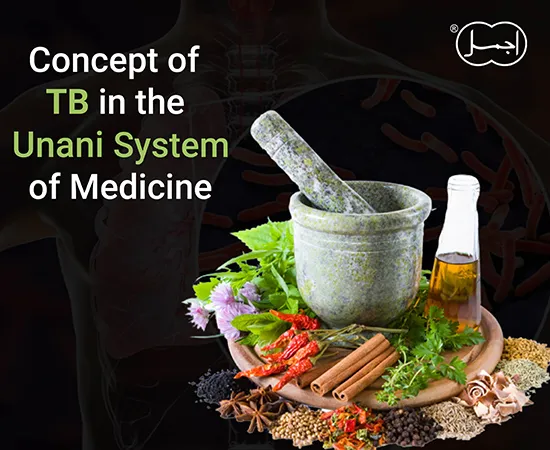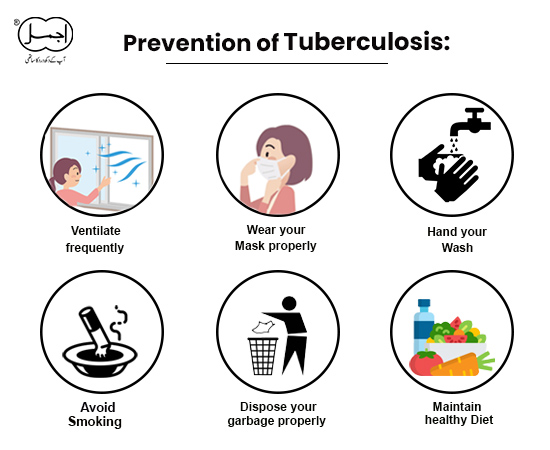Tuberculosis (TB) is an airborne infectious disease. TB usually affects the lungs and it is caused by Mycobacterium tuberculosis bacteria. TB is a major health problem worldwide, which causes health problems among millions of people every year. The disease is commonly caused by infection of the lung with Mycobacterium tuberculosis. In the Unani System of Medicine, tuberculosis is also known as Diq or Sil. Both these unani terms are considered synonyms. Sil means emaciation and Diq mean the low-grade fever or Humma-e-Diq.
Tuberculosis can cause infection in any part of the body, but most frequently occurs in the Lungs and is called Pulmonary TB. Extrapulmonary TB happens when tuberculosis infects outside of the lungs, although extra pulmonary TB may exist with pulmonary TB simultaneously.
The tuberculosis disproportionately affects the unprivileged persons in both developed and developing countries. The recent research in diagnostics, drugs, and vaccines and increased implementation of present interventions have enhanced the prospects for better clinical Care and worldwide tuberculosis control. (Jamil et al., 2005)
TB is the ninth leading cause of mortality throughout the world and the prime cause from a one infectious causative agent, ranking above HIV/AIDS.(Anjum, 2019) According to the trusted source of World Health Organization (WHO), 1.5 million people died from tuberculosis in 2020. Moreover, tuberculosis is also the 13th leading cause of mortality worldwide. At present, after COVID-19, TB is the second main infectious cause of mortality. In developing countries TB is most common disease, however in 2020 more than 7,000 cases were reported in the United States according to the Centers for Disease Control and Prevention (CDC).(Nall, 2021)
Drug-resistant TB is another continuous threat, with 490k cases of multidrug-resistant. China, India, and the Russian Federation are the countries with the highest numbers of MDR/RR TB cases which are 47% of the global total. Moreover, human cost, makes tuberculosis the main burden on the socio-economy. In this regard, the World Health Organization declared tuberculosis a global emergency in 1993.
Concept of TB in the Unani system of medicine
The ancient Unani system of medical literature has multiple citations on tuberculosis of the lungs. Since 460 BC, the time of Hippocrates the presence of the disease is distinguished by fever, cough, wasting, and sputum. The ancient Unani physicians named tuberculous as Sil and Dique and explained tuberculosis separately under both headings keeping the uniformity in terminology and nomenclature. Sil and Dique, terms are said to be synonyms, Sil means emaciation and Dique means the low- grade fever (the fundamental symptoms of the disease). Sil is defined as a disease in which the organs get thin and lean and may occur with or without ulcer/Qarha. Sil that occurs with an ulcer is known as huma-e-dique (tubercular fever).
Sil has also been expressed as wasting as emaciation is a special feature of TB and ulcer means damaging and discontinuity of mucus wall and formation of pus. The symptoms of the disease appear because of ulceration of the lungs. The patient has clinical features like fever and expectorates pus with cough. Lungs also get injured in sil.
Some of the Unani scholars introduced the term Aqtiqoos as another meaning of sil and have also called the fever Dique as Aqtiqoos. Dique means softness and leanness. It got its name as it is a low-grade fever that tends to lean. Dique and sil are in f terms of the same illness. In 460 BC, Buqrat the father of medicine also think of these names as synonymous. Huma-dique is the uncommon and unnatural temperature that steadily damages the organs of the body (Aaza asliya) and destroys the fluids produced by the body.

Etiology
According to Ibne Zohar, tuberculosis occurs when the body becomes very thin, weak, k, and dry of body fluid. Commonly Diq occurs when Aazae aslia (vital organs) become Har yabis (hot & dry). According to Ismail Jurjani, Diq is a fever caused by unusual heat (Hararate ghariba), when this heat is related to vital organs, especially the heart then it dissolves the Rutoobate tabayee (normal body fluids) of the human body which results in Diq.
Popular Unani scholar Razi said that Diq is caused by pleurisy, inflammation of the diaphragm and lungs, and pneumonia. Unani scholars have also distributed the causes of Sil into Asbab Sabiqa (preceding causes) and Asbab Badiya (extrinsic causes). Preceding causes are
- Infectious fevers (Huma-e- uffunia)
- Compound fever (Huma-e-murakkaba)
- Day fever (Huma-e-youm)
- Pneumonia (Zatur-riyah)
- Pleurisy (Zatuljnab)
Extrinsic causes include,
- Anxiety
- Malnutrition (Naqs Taghzia)
- Hot and dry temperament (Haar Yabis Mizaj)
Unani scholars have also given stressed predisposing factors, for example, chronic diseases and environmental factors such as congested areas, crowded places, and deficiency of fresh air. It has also been believed that whenever changes happen in air or water and get contamination occurs, they result in the sepsis of humors (Uffonat-e-akhlaat) and thus resulting in the disease.
Ahmad Bin Muhammad Tabri has also described the following disorders under the head of vulnerability, which results in Sil, if not managed properly:
- Derangement of temperament with morbid matter (Sue- e-mizaj Maddi).
- Disease of the kidneys (Amraz-e-Kulliya)
- Ulcers in the urinary bladder (Busoor-e-Msana)
- Diabetes mellitus (Ziabetus)
Unani physicians have also explained the infection (Tadiya) and epidemic (Waba) in their books. Sil has been included in infectious and communicable diseases. Old Unani physicians had a concept about the infectious nature of the Sil, the pathogenic microorganisms (Ajsame Khabitha), and specific types of Materials (Madda).
Pathophysiology
In tuberculosis abnormal heat (Harart-e-Ghair Tabayee) stays in the body to such an extent that causes the body fluids to dry up. The Unani physicians have divided the body into three parts: Organs (Aza), Humours (Akhlat), and Pneuma (Arwah) and state that unusual heat (Hararat-e-Ghair Tabayee) remains in the organs and can dry up all the body fluids, especially of vital organs (Aaza-e-Aslia) in TB. This abnormal heat also causes a kind of fever called Huma-e-diq or tubercular fever.
According to the Unani System of medicine, the class of tuberculosis depends upon the dissolution of body fluids (Tahallul Rutoobate badania).
Majoosi stated that there are three grades of Diq i.e.
- Diq Mutlaq: When due to abnormal heat the fluids of capillaries become dry then this condition is called Diq This is the first grade of Diq.
- Zabool/ Sil: When the fluids of soft organs connected to vital organs are ‘destroyed by abnormal heat then this is known as
- Mufattit: If the fluids of vital organs got dried by abnormal heat then this state is known as
Diagnosis
Skin test
Blood test
Chest X-ray
Other tests
The healthcare professional may also recommend tests on sputum or mucus which is extracted from deep inside your lungs to test for TB bacteria. If the sputum tests positive, this infers that TB bacteria can be transmitted to others. The patient will need to wear a special mask until after the commencement of treatment and the sputum tests negative for TB.
Patinet may need other tests as well, such as a chest CT scan, bronchoscopy, or lung biopsy, if the above described test results remain unclear. (Nall, 2021)
According to Unani Concept, diagnosis of TB is done with help of the following points.
- Physical signs (Jismani Nishaniyan) include a dusty and pale look, facial cyanosis, sleepy and sunken eyes, hanging ear lobes, stretched forehead SK, and hardening of
- Pulse (Nabz) becomes Hard or weak (Zaeef), Fast (Saree)and Continuous (Mutawatir).
- Due to the wasting of body fats urine (Baul) becomes
- Temperature pattern (Trz-e-Hrarat): Heat is burned in the body after eating as pouring water on quick Razi described that one of the ways of diagnosis is to feed the patient at different times if the patient has a fever after each meal then it is a true sign of Diq.
The most predominant physician Ibn Sina and Ibn Rushd described that the temperature of the tubercular person (Madqooq) stays constant and does not change but on taking a meal, the temperature increases and the pulse becomes Pulsus Fortis and Magnus (Qawee and Azeem)
Ibn Hubal Baghdadi has described temperature increment after having a meal as a pathognomic sign.
Management of Tuberculosis
Following Unani therapies are used for the management of tuberculosis:
- Dieto-therapy (Ilaj Bil Ghiza)
- Regimental therapy (Ilaj Bil Tadbeer)
- Pharmacotherapy (Ilaj Bil Dawa
Dieto-Therapy (Ilaj Bil Ghiza)
Unani physicians have put stress on the betterment of the resistance of the patient to fight the disease successfully. That is why they have emphasized n nutritious diet, especially a protein-rich diet. Most of the Unani physicians suggested:
- Donkey’s milk (as it is supposed to clean the ulcer, rehydrates the body, and enhance the body’s resistance to fight the disease) goat’s milk, and meat of birds, fish, and
- Moist and cold vegetables like Khurfa (Portulaca oleracea), Kahu leaves (Lactuca sativa), Khubbazi (Malva sylvestris), Kaddu (Cucurbita moschata), Kheera (Cucumis sativus), as these vegetables also rehydrates the
- Honey (Aasal) and Honey water ( Maaul Aasal) has been prescribed to clean the lung ulcers (Jaali) and purulent
- Razi recommended fish, bird’s flesh, rose water (Arq-e-Gulab), and barley water (Maaul Shaer).
- Majoosi also advises meat of chicken and teehu, Moong dal in the form of asfaidbaj (a form of soup).
- Ibn-e-Sina recommends fat-free soft meat, fish, and
- Azam suggested the use of Sarisham Mahi (Isinglass).
- Care is taken to give a large number of fluids to keep the body cool and make up deficiencies and strengthen the vital body
According to different stages of TB, the diet should include:
First Stage: In the first stage barley water (Maaul Shaer), fish kebab, and other vegetables like Kanocha (Phyllanthus maderaspatensis), Khurfa (Portulaca oleracea), Kadu (Cucurbita moschata) should be given to the patient.
Second Stage: In this stage, the diet mentioned above should include donkey’s milk, goat’s milk, meat stock (Maaul leham), etc.
Third Stage: If TB progresses into the third stage the patient is skinny and is extremely weak then easy to digest diet should be given like soup of bird meat, chicken soup, etc.
Regimental therapy (Ilaj Bil Tadbeer)
Following are the non-pharmacy therapeutic methods described by Unani scholars:
- Venesection (fasad) of the head and for face is advised physically strong
- Purgative (Mushil) of Amaltas (Cassia fistula) along with Turangbeen (Fraxinus oranus) is given. Sapistan (Cordia latifolia), Maveez munaqa (Vitis vinefera), Decoction of Unnab (Zizyphus sativus), and banafshan (Violo odarata) may be administered
- Cupping (Hijama): Some Unani physicians have recommended cupping (Hijama) in cases where venesection is
- Massage (Dalak): Massage of Rose oil and Khari oil (Dalak) on the chest are suggested. Pumpkin oil, neelofer oil (Nymphaea lotus), opium oil, banafsha oil (Viola odorata) for body massage, and a bath after it.
- Liniment (Tila) Application of cold Tila on chest like Gulab (Rosa demascena), sandal (santalum album), Khurfa (Portulaca oleracea), Aab Dhania Sabz (Coriandrum sativum).
- Turkish Bath (Hammam): Razi recommended a lukewarm water bath (Hammam-e-Moatadil Ratab) before and after eating meals while Ibn Sena advised it before Majoosi has suggested the oil massage after the bath.
- Sitz Bath (Aabzan) is advised with lukewarm water after which the application of Roghan Banafsha (Violaodorata) is done.
- Dry air is also helpful in healing ulcers. Patients are advised to stay in a drya and properly ventilated
Pharmacotherapy (Ilaj Bil Dawa)
During the treatment of a Sil patient, Unani physicians have emphasized mucolytic, desiccants, and healing agents.
Mamoolat-e-matab (Clinical Prescriptions)
- Dawai-Diq (5gm) is given with goat milk in the morning.
- Qurs Tabasheer (Bambusa arundinacea) 01 in Number is given in the evening followed by Gilo Sabz (Tinospora cordifolia), Tukhm Khayyarain (Cucumis sativus), Aslussoos (Glycyrrhiza glabra), (3 gm each) in 60 ml Arq Sheer and 60 ml Arq Hara Bhara (Pharmacopoeial preparations) mixed with Sharbat-e-Neelofar (Nymphaea alba) (20 mL). For the first three days, goat milk donkey milk, and Kaddu (Citrus Vulgaris) water are given in the dose of 70 ml, which is increased to 10 ml each day till it becomes 210 ml, and thereafter it is decreased each day to 10 ml until it reaches again to70
- If there is too much weakness then along with the above-described prescription after a meal the compounds of irong, Qurs kushta khubsulhadid 01 in Number or compounds of gold lsuch as, Maul Zahab 05 drops should be given and Loab-Behidana (Cydonia oblonga) (3 in Numbers), Kadu (seeds of Cucurbita moschata) (3 in Numbers), Sheera Maghz Tukhm, Sheera Magz Tukhm Tarbooz (seeds of Citrus vulgaris) (3 in Numbers), Sheera Tukhm Khurfa (seeds of Portulaca oleracea) (3 in Numbers) are given in combination with Sharbat-e- Neelofar (Nymphaea alba) (20 ml).
- Qurs-e-Tabasheer (Bambusa arundinacea) and Qurs-e- Kafoor (Cinnamomum camphora) (Pharmacopoeial preparations) may also be given.
Following prescription is also effective in controlling the cough, hemoptysis, and healing of ulcers in the management of tuberculosis:
10 gms of Gond Kateera(sterculia Uranus), 10 gms of Rubbus Soos (Glycyrrhiza glabra), 10 gms of Shakr Tighal-(Tigril’s cocoon), 0 gms of Kahrubai Shamai (Ambreskenum) fine powder of these drugs combined with 10 gm Khameera khshkhash (Papaver somniferum) and after this process give it to the patient.
30gms Behdana(Cydonia oblonga), unable (Ziziphus Sativa) (5 in No), Sipistan (Cordia latifolia) (11 in No), Mako Khushk (Solanum nigram) & Gul-e-Nilofer (Nymphea lotus) 60 gm each gives it a boil in Arq Makoh (Distillate of Solanum nigram) And Arq Gaozbaan (Distillate of Borage Officinalis) 250ml and mixed with sheera-e-and bar (syrup of polygonum bistorta), 50-gram seeds of Black khurfa (Postulaca deracea) and 50-gram seeds of Kahu (Lactuca sativa) in 90 ml Arq-e- Bartang (Distillate of Plantago lanceolata) with 20 ml sharbat-e-Banafsha (Viola odorata) and 60 gm Khaksi (Sismbrium irio) sprinkled over it.
Furthermore, Unani physicians have emphasise on usage of crab and barley for treatmsnt purpose, as they find it very effective in tuberculosis and most of the physicians have mentioned its usage in tuberculosis.(Anjum, 2019)
Prevention of Tuberculosis
Even if there is a low risk of TB around you, you should always need to be familiar with the measures you can take to prevent contracting the TB bacteria or transferring the infection to others.
Following are the few important steps you can take to prevent TB infection:
- Connectingng with a medical expert for testing if you think you’ve been exposed to TB.
- Get yourself tested for TB if you have an HIV infection or any underlying condition that increases the risk for infection.
- before and after traveling to a country with a high TB rate visit a nearby travel clinic or check with your doctor about testing
- If your job exposes you to the danger of tuberculosis, ask about your workplace’s infection prevention and control program and implement the precautions advised.
- avoiding prolonged or intimate contact with someone who has active tuberculosis

Preventing transmission
If people with active tuberculosis don’t take measures, they can spread the bacteria that causes the infection to between 10 and 15 people every year through close contact, according to WHOTrusted Source.
These methods can help prevent the spread of tuberculosis:
- If you have a higher risk of tuberculosis or believe you may have been exposed, get tested.
- Take all of the medication advised if you test positive for latent or active tuberculosis.
- If you have active tuberculosis, stay away from crowds and close contact with people until you are no longer contagious.
- If you have active tuberculosis and must spend time with others, use a mask.
- Observe any further directions given by your doctor.
In the end, tuberculosis can be treated and healed, but it’s always ideal to get started as soon as possible.
If you think you’ve been exposed or are at a higher risk of infection due to a medical condition or where you work or live, talk to your doctor about what to do next.
Vaccinations
The bacillus Calmette-Guérin (BCG) vaccination is primarily utilized in countries with a high prevalence of tuberculosis. This vaccine is more effective in children than in adults.
Because the danger of tuberculosis is low in the United States, it is not frequently utilised. In addition, the vaccine may interfere with TB skin testing, resulting in a false-positive result. (Nall, 2021)




